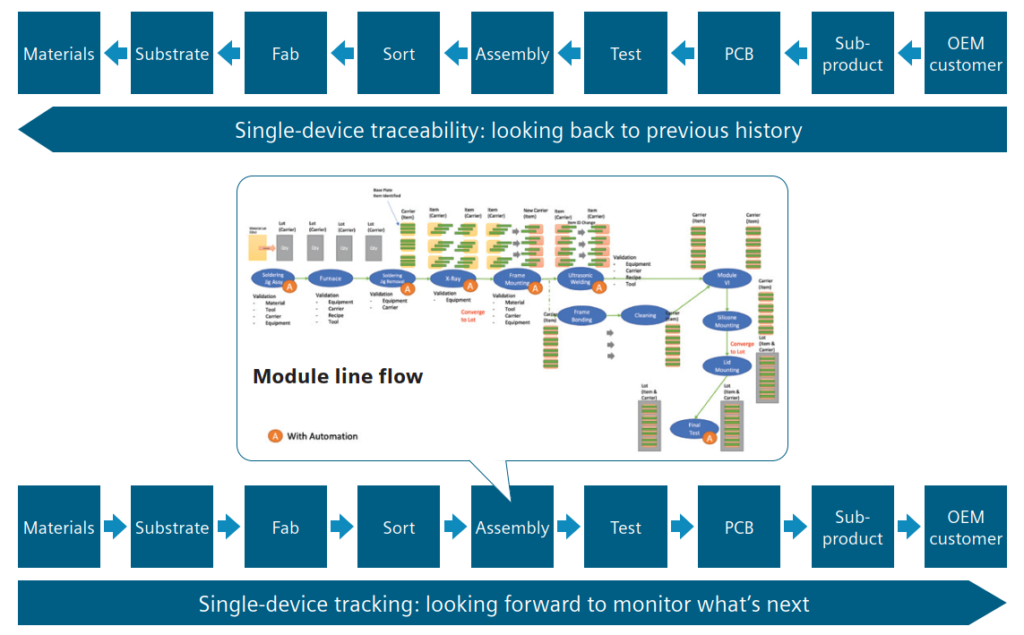Semiconductor makers can’t slow down for single device tracking
Semiconductor production capacity is at a premium, and it’ll take years to expand. The manufacturing execution system (MES) can help get more out of the factory, but to do so, it can never slow down. Alongside increasing demand are higher quality requirements, which require traceability for process conditions in the manufacturing life cycle, which slows down operations. So, how are semiconductor companies answering these seemingly counterproductive asks? More throughput with more traceability?
Historically, manufacturers processed semiconductors and used MES for lot-tracking and genealogy. With today’s higher mix, manufacturers urgently need the ability to track single devices to accommodate traceability expectations—but without slowing down operations.
Tracking needs and challenges for multi-chip modules (MCM)
Companies making multi-chip modules (MCM) like central processing units (CPUs) or systems in packages (SIPs) need to track sub-devices or chiplets as well as the final package. Varying batch sizes at each step results in sub-devices and final packages following different manufacturing paths. Full traceability requires tracking and monitoring each device as it proceeds through the process.
Without fully process-controlled assembly and test, complex multi-chip or multi-chiplet devices can result in low yield. For that, tracking needs a connection to MES and equipment automation. Yet typical MES modeling and processing in the application layer might take seconds, which is far too slow to track the volume of individual products and sub-products in these environments. Current tracking methods are no longer adequate for complex products and would slow down operations too much.
Semiconductor single-device traceability and tracking
Traceability includes detail for the customer to trace back to see materials and processing steps, equipment and conditions for every device. However, traceability cannot meet the IC manufacturer’s needs alone; chip and device makers need to both track and trace single devices.
To Trace: Follow the completed path backward from its current point to where it began: for example, where a device comes from on the wafer – so this begins at the start of fab, using maps; this is backward-looking genealogy.
To track: Follow the emerging path forward from wherever it is currently to where it should go next, like a map: this allows different processing on each device at specific steps, the same at others, and records details and metadata associated with the individual die once cut and particular package once assembled; this is forward-looking.
Customer requirements for traceability include knowing the exact process conditions exposed to every device at every moment in its manufacturing cycle. Traceability only includes data collection; a semiconductor maker needs tracking to do different processing on each device in a batch. Tracking is the map for the operation showing what’s next for each individual device.

Single-device tracking as MES capability
With track and trace, companies deliver information customers demand while using capacity efficiently. The combination of tracking to allow unique processing per device and MES for dispatching and control offers semiconductor manufacturers a whole new level of capability.
Only high-performance engines (HPE) can process the volume of data and transactions needed to offer track and trace. HPE is more efficient because it uses bulk, not sequential, data writing to avoid slowing down.
By including single-device tracking in the MES, track, trace and operational transactions are in a single application, which improves:
- Accessibility and speed to product data records
- Ability to embark on detailed advanced analytics
- Confident single-device processing
- Support high-volume manufacturing facilities with rapid tracking transaction
Learn more about MES needs for a high-performance approach to improving single-device tracking in the white paper.


